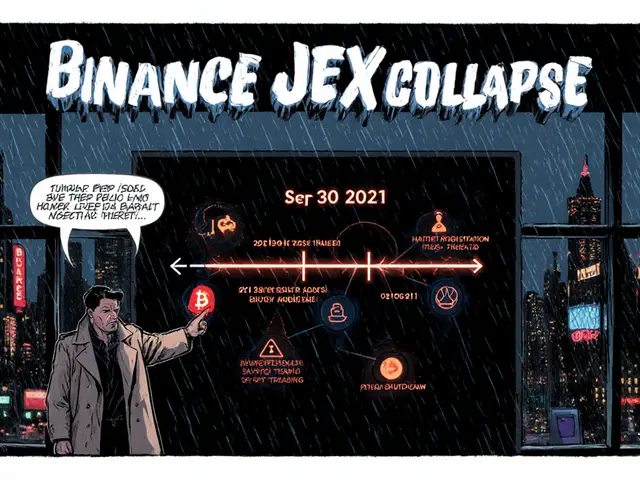ve(3): Token Lock, Governance, and DeFi Basics
When working with ve(3), a voting‑escrow model that locks tokens to earn voting power and reward boosts. Also known as ve three, it creates long‑term alignment between holders and protocols. The same framework relies on voting escrow, a mechanism that requires users to stake tokens for a fixed period, and on governance token, the asset that carries voting rights within a DAO.
Why does token lock matter? In simple terms, the longer you lock, the more influence you gain over protocol decisions, and the higher the share of fee rewards you receive. This relationship forms a semantic triple: ve(3) encompasses token lock mechanisms. Another triple reads: voting escrow requires staking tokens. And a third: governance token influences protocol outcomes. Together they explain why many projects adopt the ve(3) style – it boosts participation, reduces sell pressure, and creates a built‑in incentive for holders to stay invested.
Key Concepts Around ve(3)
The first concept is token lock duration. Protocols usually let you choose anywhere from a week to several years. Longer locks translate into higher voting weight and larger boosts on liquidity mining or transaction fee shares. The second concept is boosted rewards. Because locked tokens are considered “locked liquidity,” platforms reward them with extra yield, making ve(3) attractive for yield farmers looking for stable returns. Finally, governance participation ties directly to how much you’ve locked – the more you lock, the louder your voice in proposals ranging from fee adjustments to new product launches.
These three concepts tie neatly into the broader DeFi ecosystem covered by our articles. For example, airdrop campaigns often target ve(3) participants because their locked positions signal commitment. The articles in this collection explain how to spot genuine ve(3)‑related drops, what eligibility criteria to watch for, and how to claim safely. Meanwhile, DEX reviews such as PancakeSwap v3 on Ethereum or LFJ v2 on Arbitrum highlight how ve(3) tokenomics affect trading fees and liquidity depth on decentralized exchanges.
Regulatory trends also intersect with ve(3). Global crypto regulation reports from 2025 note that voting‑escrow models may face scrutiny under anti‑money‑laundering rules, especially when large, long‑term positions mask true ownership. Our pieces on blockchain AML technology and worldwide crypto rules give you a clear view of how compliance requirements could reshape ve(3) strategies, from KYC checks to reporting obligations.
From a technical standpoint, ve(3) contracts are usually built on Ethereum, Binance Smart Chain, or newer L2 solutions like Arbitrum. Understanding the underlying smart‑contract architecture helps you evaluate security risks, a topic covered in the Hotbit exchange shutdown review and the CremePie Swap scam analysis. Knowing where the ve(3) token lives lets you pick the safest wallet, compare fee structures, and avoid platforms with hidden withdrawal costs.
If you’re a developer, the token‑lock model can be adapted to your own project. The “Proof of Work Blockchains” article shows why many teams shift to proof‑of‑stake plus ve(3) to cut energy use while still rewarding long‑term contributors. Likewise, the “Blockchain AML Technology” guide outlines how to embed compliance checks directly into a ve(3) contract, making it easier to satisfy future regulators.
For investors, the main takeaway is that ve(3) isn’t just a gimmick; it’s a measurable lever that can boost returns, enhance governance influence, and signal commitment to a protocol’s success. Our collection includes deep dives on specific tokens like MEAT, RATO, and HUNT, each of which uses a variation of the voting‑escrow model to differentiate itself in the crowded meme‑coin space.
All of this sets the stage for the articles you’ll find below. Whether you’re hunting for the next airdrop, comparing exchange fees, or digging into the latest regulation updates, the ve(3) framework ties them together. Dive into the list and pick the pieces that match your current questions – you’ll walk away with practical steps, real‑world examples, and a clearer picture of how token lock can work for you.




